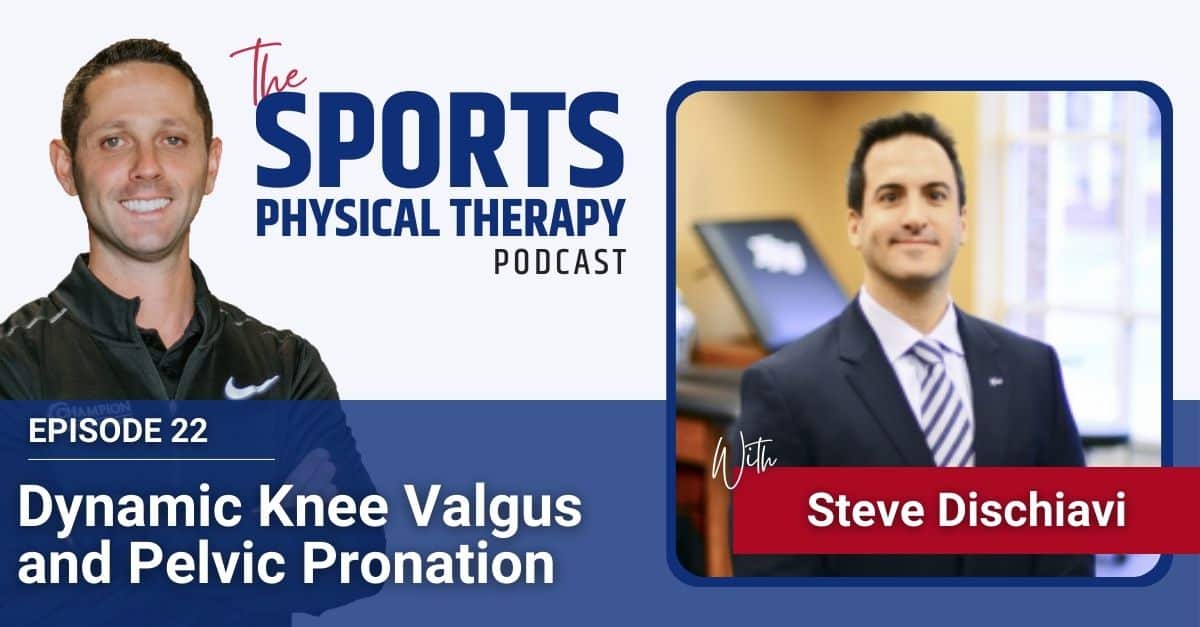Knee valgus is something that occurs normally at the knee, but may put the knee in a disadvantageous position when performed without control.
In this episode of the Sports Physical Therapy Podcast, Steve Dischiavi and I discuss the concept of controlling this dynamic knee valgus through tension. He also introduces us to the concept of pelvic pronation and how this can be incorporated into rehabilitation and injury prevention programs.
Show Notes
Dr. Steven Dischiavi is an assistant professor in the Department of Physical Therapy and the Director of Rehabilitation in the Department of Athletics at High Point University. Steve has over 25 years of experience in sports medicine, including 10 years with a professional sports team.
Steve began the first decade of his career as a clinic administrator for a large outpatient PT company and spent 14 years as an adjunct physical therapy faculty member before moving full time into academia. Steve served as team physical therapist and assistant certified athletic trainer for the Florida Panthers of the National Hockey League.
Steve has obtained both a Masters and a transitional doctorate in PT. He also holds a manual therapy certification from the Ola Grimsby Institute. He is board certified by the American Physical Therapy Association in Sports Physical Therapy. He is a also Certified Athletic Trainer (ATC)
Steve recently defended his PhD at the University of Ulster in Northern Ireland under the direction of supervisor Dr. Chris Bleakley. His current research focus is on the application of specific therapeutic exercises and their effectiveness at preventing lower extremity injuries, altering lower extremity kinematics and improving athletic performance measures.
Steve also teaches an abundance of Continuing Education courses through national platforms such as Medbridge and Herman and Wallace Pelvic Health Institute.
Articles:
- Does ‘proximal control’ need a new definition or a paradigm shift in exercise prescription? A clinical commentary
- Rethinking Dynamic Knee Valgus and Its Relation to Knee Injury: Normal Movement Requiring Control, Not Avoidance
- Do exercises for patellofemoral pain reflect common injury mechanisms? A systematic review
- Do currently prescribed exercises reflect contributing pathomechanics associated with femoroacetabular impingement syndrome? A scoping review
- Do ACL Injury Risk Reduction Exercises Reflect Common Injury Mechanisms? A Scoping Review of Injury Prevention Programs
Social Handles for COS:
– Twitter: @finishfirst_pt
– Instagram: @finishfirst_pt





